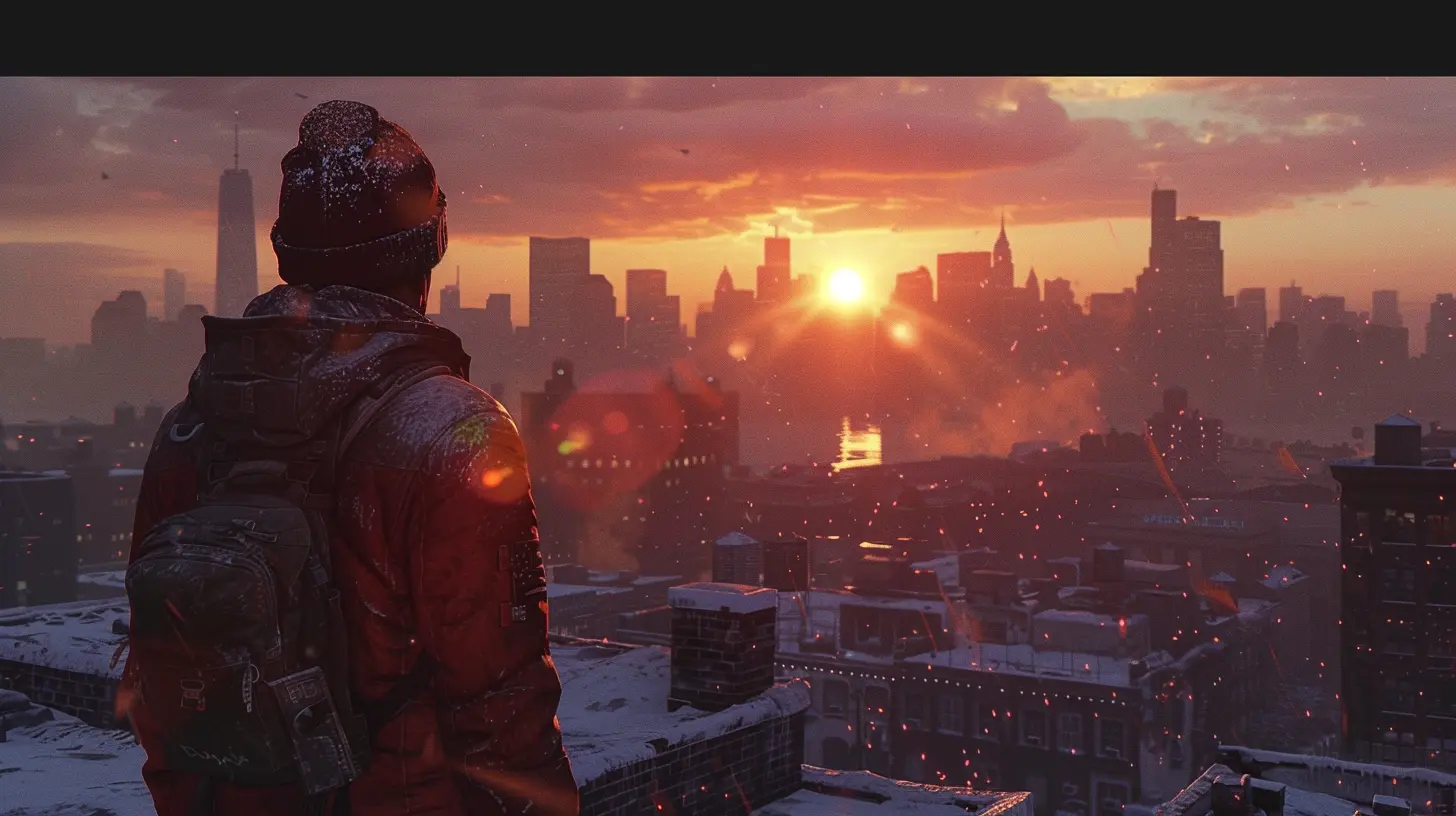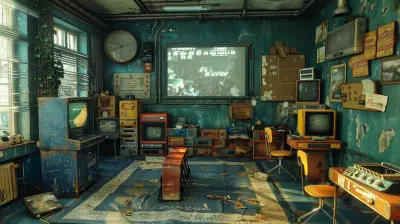The Rise of Cinematic Action Games in Today's Market
8 June 2025
Let’s be honest — video games aren't just about crushing enemies or collecting coins anymore. They're evolving into something bigger, deeper, and more emotionally gripping. Welcome to the age of cinematic action games, where storytelling meets gameplay in the most immersive way possible. We’re talking about those jaw-dropping, edge-of-your-seat, emotionally charged games that feel more like Hollywood blockbusters than joystick time-killers.
So, why is everyone talking about cinematic action games? What makes them so special? And more importantly, what’s behind their explosive rise in today’s gaming market?
Grab a coffee and let’s dig into this pixel-packed phenomenon.
🎬 What Exactly Are Cinematic Action Games?
Alright, let’s clarify this first. When we say "cinematic action games," we’re talking about titles that fuse intense, action-packed gameplay with high-quality cinematic storytelling. Think of it like playing through a movie — one where you’re not just watching the hero make decisions, you’re actually making them. It's gameplay plus narrative drama, delivered with stunning visuals, lifelike voice acting, and top-tier sound design.Ever played games like The Last of Us, Uncharted, God of War (2018), or Red Dead Redemption 2? That’s the vibe — epic set pieces, emotional depth, and a story that pulls you in and doesn’t let go.
🎮 Why Are Cinematic Action Games Booming Right Now?
There’s no denying it — cinematic action games have taken over the stage. But why now?1. Gamers Want More Than Just Point-and-Shoot
Let’s face it, players have evolved. We still love blasting baddies and unlocking achievements, but nowadays we also crave stories that hit us right in the feels. We want to care about the characters. We want our choices to matter. We want experiences that stick with us long after the credits roll.Cinematic action games offer that emotional depth. They're not just about winning — they’re about feeling something real.
2. Next-Gen Consoles Made It All Possible
You can’t talk about cinematic action games without giving props to the hardware. The rise of powerful consoles like the PS5 and Xbox Series X has revolutionized what’s possible in terms of graphics, physics, and performance.These machines allow developers to create ultra-realistic worlds with smoother gameplay and fewer loading screens. That’s essential when you're trying to keep players immersed in a story-driven game. Visually stunning, emotionally charged scenes just hit different when they’re backed by cutting-edge tech.
3. Big Budgets, Bigger Expectations
Studios are pouring serious cash into their flagship cinematic titles, and it shows. We’re talking full motion-capture performances, professional voice actors, and narrative teams that rival those in Hollywood. It’s no longer uncommon to see A-list actors lending their likenesses and voices to games.And guess what? Fans love it. The more polished and emotionally engaging a game feels, the more likely players are to share it, stream it, and rave about it online.
🧠 The Psychology Behind the Appeal
Let’s look under the hood for a sec.Cinematic action games activate something deep in our brains. They blend storytelling (which we've loved since campfires and cave paintings) with interactivity (which we crave for agency and control). That combo triggers emotional engagement on a whole new level.
And when we're emotionally invested in a game, we remember it. We recommend it. We replay it. These games become experiences, not just pastimes.
🏆 Groundbreaking Titles That Changed the Game
Here’s a quick roll call of legends that redefined the cinematic action genre:🔹 The Last of Us Series
Naughty Dog perfected the art of emotionally gut-wrenching storytelling with this one. A bleak, post-apocalyptic world paired with rich character development made for a ride that left players in emotional tatters (in a good way).🔹 God of War (2018)
Kratos went from one-dimensional rage monster to complex, emotionally nuanced father figure. The single-shot camera style made the entire game feel like one seamless movie — pure immersion.🔹 Red Dead Redemption 2
A wild west epic that’s as much about brotherhood and betrayal as it is about shootouts and horse chases. Rockstar’s attention to detail, combined with a deeply human story, set a new standard.🔹 Uncharted Series
Nathan Drake’s adventures drip with cinematic flair. Think Indiana Jones, but you’re holding the controller. Slick motion capture, witty dialogue, and blockbuster set pieces galore.⏩ Streaming & Content Creation: Fueling the Fire
It’s no coincidence that as cinematic action games have risen, so has the popularity of game streaming and Let’s Plays. These titles aren’t just fun to play — they’re fantastic to watch.They draw in both hardcore fans and casual viewers. The spectacular visuals and intense narratives make them perfect for streamers to showcase, discuss, and react to in real-time. It’s reality TV meets interactive fiction — and it works.
👥 A Wider Audience Than Ever Before
Not everyone wants to grind for hours in multiplayer battles. Some folks just want to kick back and enjoy a gripping story. Cinematic action games have opened up the gaming world to a more diverse audience — including people who might’ve never picked up a controller until now.They blur the line between gaming and entertainment, making them more accessible to people who traditionally preferred movies or TV.
🔮 What’s Next for Cinematic Action Games?
We’re just scratching the surface. With emerging tech like AI-driven storytelling, photorealistic environments, and VR integration, the potential for even more immersive cinematic experiences is huge.Imagine making narrative choices that dynamically change based on your real-life expressions or tone of voice? Yeah, we’re heading there — and it’s going to be wild.
Plus, indie developers are starting to join the party. While big studios dominate now, expect smaller devs to inject fresh ideas and perspectives into the genre. Think of it as the indie film movement of the gaming world.
🛠️ Challenges Ahead: Not All Glitz and Glam
Of course, it isn't all sunshine and blockbusters.Producing a cinematic action game takes a TON of time, resources, and money. That means high pressure, longer development cycles, and the risk of launching games that are overhyped or undercooked (ahem Cyberpunk 2077 at launch, anyone?).
Then there's the danger of style over substance. Some developers get so caught up in making games look like movies, they forget to make them feel like great games. Balance is key.
📝 The Bottom Line
Cinematic action games are redefining what it means to be a gamer in today’s world. They’re more than just fun — they’re transformative experiences that connect us to characters, stories, and worlds on a whole new level.Whether you're into heart-wrenching plots, explosive action, or just a beautifully crafted world to lose yourself in for a few hours, cinematic action games have something for you.
It’s like this — if traditional games are like roller coasters, cinematic action games are like immersive theater. You’re not just along for the ride; you’re part of the story.
And guess what? The curtain’s only just gone up.
🔑 Key Takeaways
- Cinematic action games blend storytelling with gameplay to create movie-like experiences.- Modern hardware and bigger budgets have helped this genre shine.
- Titles like The Last of Us, God of War, and Uncharted set the gold standard.
- The genre attracts a wider, more diverse gaming audience.
- The future promises even more immersive experiences — but developers must keep gameplay quality in focus.
Final Thoughts
So, what do you think? Have cinematic action games earned their spot at the top of the gaming food chain? Based on the direction the industry’s heading, they’re not just a trend — they’re a testament to how powerful and meaningful games can really be.Whether you're a seasoned gamer or just hopping on the bandwagon, now’s a great time to dive into this genre and experience storytelling like never before.
Get ready to grab your controller, sit back, and lose yourself in a world that’s more than just pixels — it’s pure cinematic gold.
all images in this post were generated using AI tools
Category:
Action GamesAuthor:

Tayla Warner
Discussion
rate this article
3 comments
Bryce Blair
I'm intrigued by the evolution of cinematic action games! It's fascinating to see how storytelling and gameplay intertwine. I'm curious about which titles are leading this trend and how they'll shape the future.
June 18, 2025 at 3:46 AM

Tayla Warner
Thank you for your comment! Titles like *The Last of Us Part II*, *God of War*, and *Red Dead Redemption 2* are at the forefront of this trend, blending storytelling with gameplay. They set a high bar for future games, pushing the boundaries of narrative and player immersion.
Winona Roberts
Cinematic action games are reshaping the industry, blending storytelling with immersive gameplay. As developers prioritize narrative depth and visual artistry, players are treated to unforgettable experiences that redefine entertainment in gaming.
June 12, 2025 at 4:38 PM

Tayla Warner
Thank you for your insightful comment! I completely agree—cinematic action games are indeed transforming the landscape by merging compelling narratives with stunning visuals, creating truly memorable experiences for players.
Eloise Brooks
Cinematic action games offer immersive experiences, blending storytelling and gameplay like never before!
June 8, 2025 at 3:44 PM

Tayla Warner
Thank you! Indeed, the fusion of storytelling and gameplay in cinematic action games creates a unique and engaging experience for players, pushing the boundaries of interactive entertainment.



